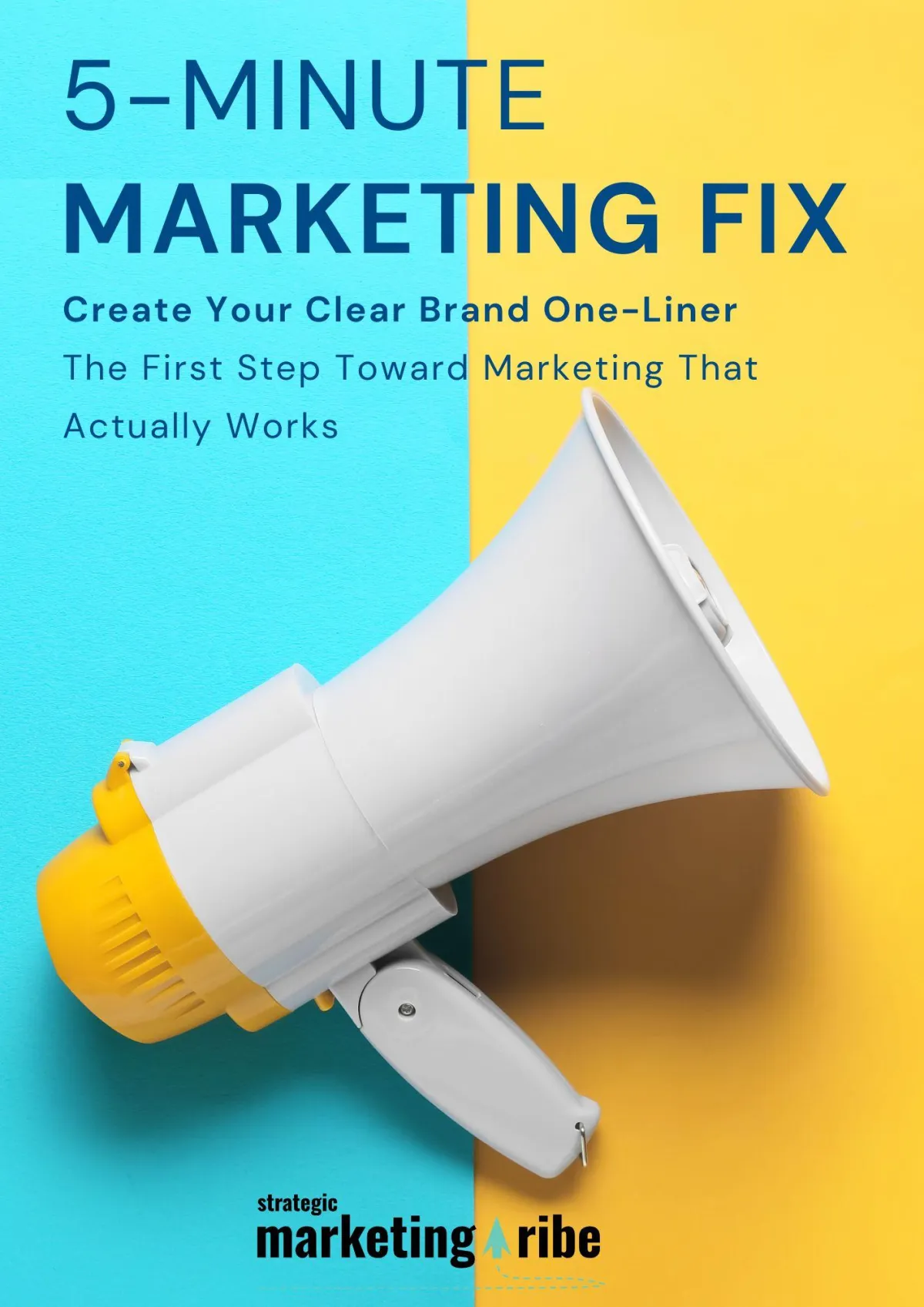STORY, MEET STRATEGY
Let’s make marketing feel less robotic and more real.
Find resources that bring your message—and your business—to life.

How to Find Out What Customers Really Want
By Vicky Sidler | Published 5 November 2025 at 12:00 GMT+2
If your customers keep ghosting at checkout, cancel after three months, or act strangely vague in sales calls, you’ve probably got a messaging problem. And that usually means you’ve got a customer problem you haven’t fully understood.
I’m Vicky Sidler, a StoryBrand Certified Guide and Duct Tape Marketing strategist who believes the fastest way to fix your marketing is to figure out what your customer is really struggling with—and why.
Luckily, you don’t need a consultant, an agency, or a 97-question survey. You just need a few practical tools and a working human brain.
TL;DR:
Ask “why” five times to uncover root problems
Interview real customers and ask what’s hard, not what they want
Use the Jobs to Be Done framework to find out what they’re really trying to do
Eavesdrop on complaints and conversations through free social listening
Review your own sales calls to catch patterns in customer pain
Collect feedback during real customer moments, not just once a year
👉 Need help getting your message right? Download the 5-Minute Marketing Fix
Table of Contents:
How to Find Out What Customers Really Want
1. Stop Guessing—Use the Five Whys:
2. Ask Real Customers. With Real Questions.
3. Use the Jobs to Be Done Framework:
6. Collect Feedback While the Iron’s Hot:
1. Free Target Audience Research That Actually Works
2. The Complete Guide to Strategic Marketing
3. 'Am I Doing the Right Things?' What Mailchimp's Marketer Learned
4. AI Slop Is Breaking the Internet—Here's What Small Brands Can Do
FAQs About Understanding What Customers Really Want
1. How can I tell if I'm solving the right customer problem?
2. What’s the easiest way to start customer interviews?
3. How many customer interviews do I really need to do?
4. What is the Jobs to Be Done framework, in plain English?
5. Do I need special software to do social listening?
6. How do I turn sales call recordings into insights?
7. What’s the best time to ask for customer feedback?
8. What if I don’t have time to do all of this?
1. Stop Guessing—Use the Five Whys:
Let’s say you’re wondering why no one’s completing their online orders.
Ask: “Why aren’t they buying?”
Then: “Why does that happen?”
Then again. And again. Until you hit the real cause.
It’s called the Five Whys method. Toyota invented it. Your whiteboard will love it. You start with a symptom and drill down until you find something you can actually fix.
Here’s an example:
They don’t complete purchases
Because they abandon carts
Because checkout takes too long
Because they have to create an account
Because the system was built that way in 2017 and nobody changed it
There’s your fix. No survey monkey needed.
Pro tips:
Do this with two or three people who understand the process
Write it out where everyone can see the logic
Don’t blame people. Focus on fixing systems
2. Ask Real Customers. With Real Questions.
Interviews sound scary. They’re not. If you can talk to a customer for 10 minutes without pitching anything, you’ll learn more than you ever will from a form field.
Ask questions like:
Can you walk me through the last time this problem came up?
What was the hardest part of that?
What happens if you don’t solve it?
What does your day look like when this is going on?
What keeps you up at night about your business?
How do you feel about your current provider?
Now listen. No fixing. No selling. Just understanding.
If five different people mention the same thing, it’s probably not a coincidence. It’s a message.
3. Use the Jobs to Be Done Framework:
People don’t want a drill. They want a hole in the wall. Actually, scratch that—they want a picture hung and a compliment from their partner.
The Jobs to Be Done framework helps you think like that.
It splits customer needs into three types:
Functional (task they want to complete)
Emotional (how they want to feel)
Social (how they want to be perceived)
So when a business owner says they need marketing help, they might mean:
“Help me get more leads” (functional)
“Help me stop feeling behind” (emotional)
“Help me look legit to others” (social)
This is the stuff your messaging should speak to—not just your services.
4. Eavesdrop Strategically:
People say the realest stuff in comments and forums. Free tools like Google Alerts and Talkwalker can help you track your brand, competitors, and pain points people are ranting about.
You can also just hang out in Reddit threads, Facebook groups, or comment sections. Look for repeated phrases, frustration, and complaints. That’s your market research.
Even better, note the words they use. That’s your copy.
5. Replay Your Sales Calls:
If you record calls (and you should), go back and listen. Not for how great your pitch was—but for what the customer said. What did they complain about? What did they hesitate on? What did your rep ignore?
This is where you learn which objections matter and which questions get real answers.
Don’t have fancy tools like Gong? Use your ears and a spreadsheet.
6. Collect Feedback While the Iron’s Hot:
The best time to ask for feedback is not six months after the fact.
Ask right after the sale, after a service call, at renewal, or when they ghost.
Examples:
“What was the biggest challenge you had before buying?”
“How did the service go?”
“What would make you more likely to recommend us?”
You don’t need 100 responses. Just enough to see patterns.
What to Do Next:
Pick one method this week. Maybe ask Five Whys on that repeat issue that keeps showing up. Or interview three past clients. Or set up a Google Alert.
Small businesses don’t need big research budgets. They need curiosity and consistency. If you keep showing up and listening, your customers will hand you your next marketing move.
And if you're still unsure how to turn all those insights into something that sells?
That’s exactly what my 5-Minute Marketing Fix is for.
Related Articles:
1. Free Target Audience Research That Actually Works
If you’re trying to understand customer problems, this article helps you figure out who your customers actually are in the first place.
2. The Complete Guide to Strategic Marketing
Now that you know how to find the problem, this guide shows you what to do with the answers. Perfect next step.
3. 'Am I Doing the Right Things?' What Mailchimp's Marketer Learned
This one speaks to that “I’m doing all the things but it’s still not working” feeling—and why customer insight often holds the fix.
4. AI Slop Is Breaking the Internet—Here's What Small Brands Can Do
If you want to stand out in a sea of generic content, this piece shows why real customer conversations are your unfair advantage.
FAQs About Understanding What Customers Really Want
1. How can I tell if I'm solving the right customer problem?
If your marketing isn’t working or your leads aren’t converting, you may be solving a surface symptom. Use the Five Whys technique to drill down to the root cause.
2. What’s the easiest way to start customer interviews?
Ask a few recent customers for a 10-minute chat. Come with 5 to 7 open-ended questions and spend most of the time listening, not selling.
3. How many customer interviews do I really need to do?
Five to ten interviews are usually enough to see patterns. You don’t need a huge sample—just enough to spot recurring issues.
4. What is the Jobs to Be Done framework, in plain English?
It helps you understand what your customer is really trying to do, how they want to feel, and how they want others to see them. It’s about purpose, not just tasks.
5. Do I need special software to do social listening?
No. Google Alerts and Talkwalker Alerts are free. You can also manually check forums, comments, and review sites for real customer complaints.
6. How do I turn sales call recordings into insights?
Pick a few calls per week. Focus on what customers said, not your team. Look for objections, emotional phrases, and missed opportunities.
7. What’s the best time to ask for customer feedback?
Right after a sale, a support call, or a renewal. That’s when customers are most honest and details are fresh.
8. What if I don’t have time to do all of this?
Start with one method. Run a quick Five Whys session or do one customer interview. You’ll be surprised what even 30 minutes can reveal.
9. What do I do with all this customer insight?
Apply it. Update your homepage headline. Rethink your offer. Use customer language in your copy. Insight without action is wasted effort.
10. How can I make sure my message hits the right note?
Use the5-Minute Marketing Fix. It helps you turn what you’ve learned into a one-liner that builds trust and gets results.

Created with clarity (and coffee)







